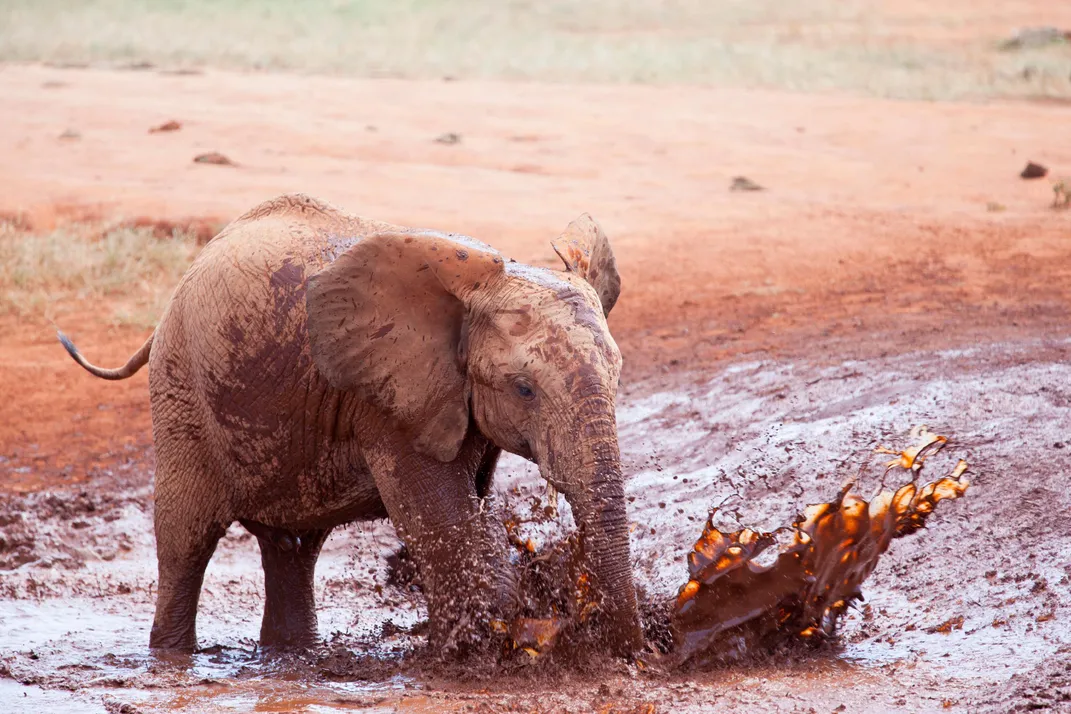Urchin Sunscreen and Other Ways Animals Beat the Burn
Species have come up with a variety of ways to protect themselves from the sun
/https://tf-cmsv2-smithsonianmag-media.s3.amazonaws.com/filer/ec/2c/ec2c490c-e51a-408b-86b5-0afac7d18c82/collector_urchin.jpg)
The sea urchin is a lowly creature, to be sure. Like a hedgehog minus all the cute parts, these slow-moving pincushions roll across the seafloor gnawing on algae, sea cucumbers, sponges and other life forms you also probably never think about. But these cousins to the sand dollar are more like us than you may realize.
That’s because when the sun gets high in the sky, even the inglorious urchin must reach for the sunscreen.
If you’re wondering how a living Koosh ball can reach for anything, well, it’s probably because you don’t quite understand how urchins work.
In addition to spines, which can be extremely painful if stepped upon, urchins have what are known as tube feet. (Starfish have them, too.) These tiny stalks extend out from in between the spines—sort of like a snail’s eyes—and grab onto the world around them, pulling an urchin to and fro across the seafloor while the spines hold them up. You could think of it like the spines are the urchin’s bones and the tube feet are their muscles, only they’re not connected to each other like a mammal’s.
Urchin tube feet are also photosensitive, which means they can sense light. And urchins have been observed grasping algae, pieces of coral and other detritus and attaching it to their bodies. But animals adorn themselves with materials for plenty of other reasons—just look at that show-off, the decorator crab. How can anyone know the urchins are guarding themselves against sun exposure?
Last fall, University of California, Berkeley undergraduate Morgan Adair Ziegenhorn traveled to Moorea, French Polynesia, to study Tripneustes gratilla, also known as the collector urchin. She made two observations that point toward dedicated sunscreen usage.
First, she noticed that urchins found only partially under rocks covered themselves more frequently and with more algae than did urchins found completely beneath rocks. Presumably, this was because the totally covered urchins were already protected from the sun by the rocks.
But a more controlled experiment was even more convincing. Ziegenhorn exposed urchins to bright and dim sunlight and then provided them with red pieces of plastic that filtered out some of the UV radiation, as well as clear pieces of plastic that afforded no sunscreen. In the end, the urchins in the direct sunlight showed a “distinct preference” for the red bits, Ziegenhorn reported recently in PLOS One.
So if urchins go out of their way to protect themselves from the sun, can they get sunburned?
Ziegenhorn admits that no one really knows, but that in her experience, urchins exposed to too much sunlight have a tendency of spawning. “Urchins spawn when they're threatened so that their genetic material can be passed on,” she says, “even if they die.”
It’s also possible that the bits of algae and coral may serve additional purposes, such as armor, ballast or camouflage. But if bottom-feeders are capable of this kind of behavior, then it won’t be a surprise that other animals also have strategies for coping with the sun.
Perhaps the simplest sunscreen strategy comes in the form of a wallow. Rhinos, elephants, pigs and many other creatures are known to use mud as an extra epidermis. Mud also cools body temperature and provides some relief from biting insects.

But mud washes off in water, so the semi-aquatic hippo has had to come up with another strategy. Instead of rolling in mud, it sweats blood.
Okay, it’s not actually blood, but it is red. Hippo sweat starts out clear, but quickly turns crimson, then brown, thanks to the combination of red and orange pigments secreted by glands below the skin. In addition to looking gnarly, this red sweat acts as sunblock and even provides some antibacterial protection. Unlike human’s water-based sweat, hippo sweat is oily in nature, which may help it spread more evenly across the animal’s skin.
Elsewhere in the animal kingdom, zebrafish are capable of producing an ultraviolet-protective compound called gadusol that protects its eggs from the sun, researchers recently reported in eLife. The compound had previously been found in other fish, but it had always been assumed that the animals were getting the chemical from something they ate. In the new study, the researchers showed that the zebrafish were creating the sunscreen all on their own—a first.
“Genes responsible for the production of gadusol are present in most fish, amphibians, reptiles and birds,” says study coauthor Taifo Mahmud, of Oregon State University. “However, mammals, including humans, do not have the genes or lost the genes during evolution.”
Like humans, whales lack the gadusol-producing genes that would be so handy in preventing the annual farmer’s tan. Fin, sperm and blue whales have all been found with evidence of mitochondrial DNA damage resulting from sun exposure. The good news is some species possess melanin, the same pigment that gives human skin its color, and those whales with more melanin seem to suffer lower levels of damage.
Obviously, it would be a lot more convenient and reliable for the human body to produce its own sunscreen, but a close second would be teaching other creatures to do it for us. For instance, Mahmud and his colleagues were able to map the production of gadusol in zebrafish and introduce this pathway into genetically modified yeast. The hope is to one day use this trick to turn the microorganisms into tiny, super-efficient sunscreen factories. Which means one day, you might be slathering yourself in sunscreen made from a fungus.
Somewhere, an algae-covered urchin just harrumphed.

